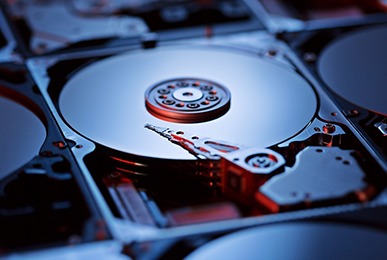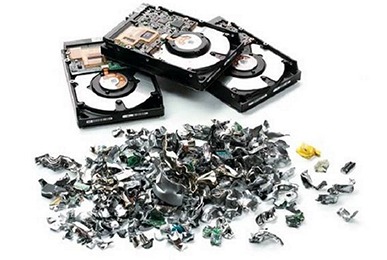
When we think about the environment, we often consider things like pollution, deforestation, and climate change. However, one crucial aspect that sometimes gets overlooked is electronic waste, or e-waste. E-waste includes all kinds of discarded electronic devices, from old smartphones and computers to worn-out televisions and, of course, hard drives. Hard drive destruction is a process that’s essential for data security, but it also has significant environmental impacts that we need to understand and address.
Table of Contents
What is Hard Drive Destruction?
Hard drives are the components in computers and other devices that store all of our data. They can hold everything from photos and videos to important documents and sensitive information. When these devices are no longer needed or are being replaced, the hard drives must be destroyed to ensure that the data they contain is not accessed by unauthorized people. Hard drive destruction is the process of physically or electronically destroying these storage devices to prevent data theft.
There are several methods of hard drive destruction, including shredding, crushing, and degaussing. Shredding involves cutting the hard drive into tiny pieces. Crushing, as the name suggests, involves applying force to crush the hard drive. Degaussing uses strong magnetic fields to erase data from the hard drive. While these methods are effective for data security, they also come with environmental consequences.
The Environmental Impact of Hard Drive Destruction
E-Waste and Pollution
One of the main environmental impacts of hard drive destruction is the creation of e-waste. E-waste is a growing problem globally, with millions of tons generated each year. Hard drives contain various metals and chemicals, some of which can be hazardous if not disposed of properly. For example, hard drives often contain materials like lead, mercury, and cadmium, which can pollute the soil and water if they end up in landfills.
When hard drives are shredded or crushed, these harmful substances can be released into the environment. Additionally, the plastic and metal fragments from the destroyed hard drives contribute to the overall volume of e-waste, which is difficult to manage and recycle.
Resource Depletion
Hard drives are made from valuable materials, including precious metals like gold, silver, and palladium. When hard drives are destroyed, these materials are often lost instead of being recovered and reused. Mining for these metals is resource-intensive and environmentally damaging, leading to deforestation, habitat destruction, and water pollution.
By not recycling the materials from hard drives, we are contributing to the depletion of these resources. This not only harms the environment but also makes electronic devices more expensive to produce in the long run, as the cost of raw materials increases.
Best Practices for E-Waste Management
To mitigate the environmental impact of hard drive destruction, it’s essential to follow best practices for e-waste management. Here are some strategies to consider:
Management and Recycling and Reusing
One of the most effective ways to reduce the environmental impact of e-waste is through recycling and reusing materials. Instead of simply destroying hard drives, consider sending them to e-waste recycling facilities. These facilities have the technology to safely extract valuable materials from hard drives and dispose of hazardous substances properly.
Management and Recycling hard drives allows us to recover precious metals and other materials, reducing the need for new raw materials and minimizing environmental damage. Some organizations also refurbish old hard drives and sell them as used or refurbished products, giving them a second life and reducing e-waste.
Secure Data Erasure
Before recycling or reusing hard drives, it’s crucial to ensure that all data is securely erased. Software-based data erasure methods can overwrite data multiple times, making it nearly impossible to recover. This method is environmentally friendly compared to physical destruction and allows the hard drive to be reused.
Donation and Resale
If the hard drives are still functional, consider donating them to schools, non-profits, or other organizations that can use them. Many communities have programs that accept used electronics and provide them to those in need. Reselling old but working hard drives is another option that extends the life of these devices and keeps them out of landfills.
Proper Disposal Methods
When hard drive destruction is necessary, it’s essential to use proper disposal methods to minimize environmental harm. Here are some recommended practices:
E-Waste Disposal Services
Using e-waste disposal services ensures that hard drives are destroyed and recycled according to environmental regulations. These services have the expertise and equipment to handle hazardous materials safely and efficiently.
Environmental Regulations Compliance
Compliance with local, state, and federal environmental regulations is crucial when disposing of e-waste. Regulations often require specific methods for handling and disposing of hazardous materials to protect the environment and public health.
Educating and Raising Awareness
Raising awareness about the environmental impact of hard drive destruction and the importance of proper e-waste management is vital. Educating individuals and organizations about the benefits of recycling and reusing e-waste can lead to more sustainable practices.
Community Programs
Communities can organize e-waste collection events and provide information on properly disposing of electronic devices. These programs can help reduce the amount of e-waste in landfills and promote recycling.
Corporate Responsibility
Businesses and organizations that use large quantities of electronic devices should implement e-waste management policies. This includes using e-waste disposal services, securely erasing data before recycling, and considering the environmental impact when purchasing new equipment.
Conclusion
Hard drive destruction is necessary for data security, but it has significant environmental consequences. By understanding the impact of e-waste and following best practices for recycling, reusing, and proper disposal, we can minimize harm to the environment. Educating ourselves and others about the importance of e-waste management and taking action to implement sustainable practices can make a big difference in reducing the environmental footprint of electronic waste.





